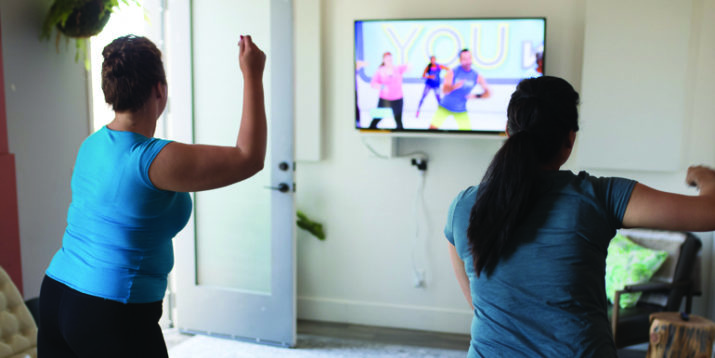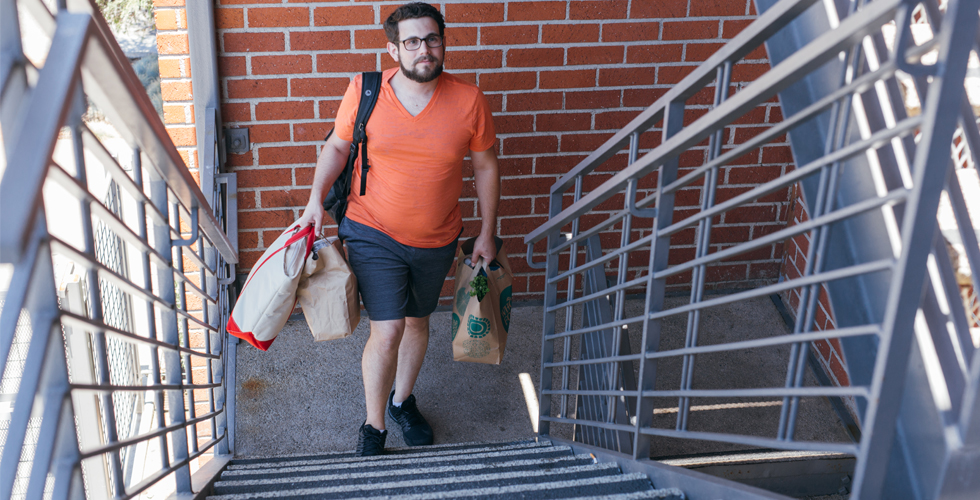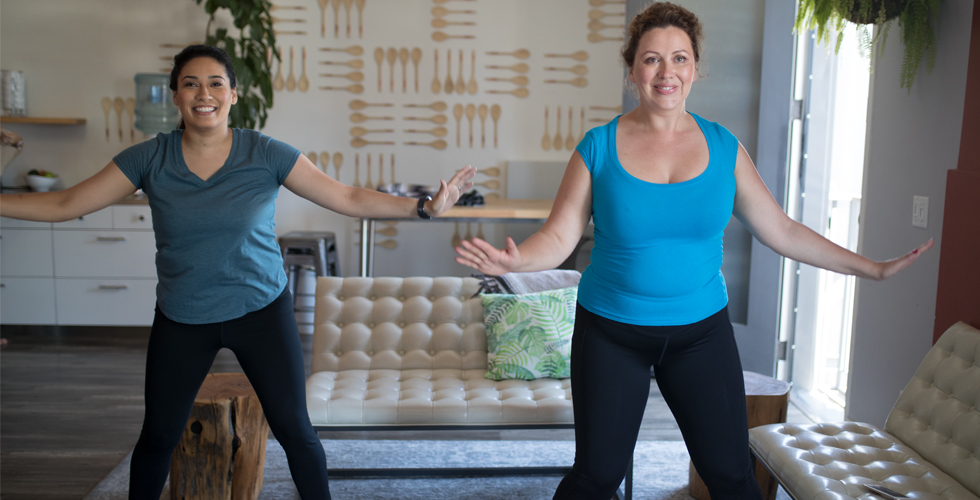Weight-Loss Workout Plans: A Guide for Beginners

The Ultimate Beachbody Guide to Weight Loss
Can’t Lose Weight? | How to Start | Make It Easier | What to Eat |
Weight-Loss Workouts | Maintain My Weight
You’ve made the choice to start a weight-loss workout plan. Congratulations!
Not only does exercise help you shed pounds, but it can also keep your body functioning optimally. That’s not to mention its mood-boosting effects. What’s not to like?
But now you may be wondering where to go from here. The sheer volume and variety of fitness-related content on the internet and in magazines and books can be quite overwhelming.
What you need is basic advice on how to get started, and a clear plan of attack. You’ve come to the right place.
Of course, to gain all of the mental and physical benefits of exercise, you must not only begin a weight-loss workout plan, but also stick with it.
Research published in the European Journal of Social Psychology suggests that it takes, on average, 66 days of regularly doing something to form a new habit.
More specifically, it took participants between 18 to 254 days to perform these tasks automatically.
While that may sound like a long time, when you think about it, just 2 months of consistently exercising has the potential to help you transform your lifestyle for better health and wellness.
How to Create a Weight-Loss Workout Plan
Step 1: Why exercise should become a habit
The reason it’s important to turn exercise into a habit is to eliminate something social psychologist Roy F. Baumeister of Florida State University calls “decision fatigue.”
This is the idea that we only have a certain amount of energy to lend to willpower and self-control, and once those resources are drained, we become unmotivated when it comes to making certain decisions, like exercising.

By turning your weight-loss workout plan into a habit, you eliminate the need to expend energy deciding to exercise.
It basically ends that annoying and all-too-common conversation in your head that goes something like this: “Should I exercise after work or just put my feet up and watch TV? I’m hungry already and it’s been a long day, so maybe it’s better to skip my workout just this once. I can do it tomorrow.“
Instead, when exercise is a habit, it becomes so ingrained in your routine that you don’t constantly question whether you should do it or not.
Step 2: How to make exercise a habit
So how do you make exercise a habit, particularly in those early days of a new workout plan when decision fatigue may still be at play?
One review of research published in the Journal of Experimental Social Psychology suggests that habits are influenced more by past behaviors than by current goals even though many people believe that their habits are strongly motivated by goals.
So, what do you do when you want to lose weight and need to change unhealthy behavior?
Ideally, you’d want to get to the point where exercise becomes a daily habit that you just do without thinking about it.
Things as simple as taking the stairs instead of the elevator and walking instead of driving five blocks to the coffee shop can become daily rituals that get you to move more.
According to one study, participants increased their physical activity through the habit-building constructs of cues and consistency.
Following this logic, when you’re cued to react (i.e., your alarm rings or your tracking device tells you it’s time to move and a notification pops up telling you it’s time for your scheduled workout) and you practice that same behavior consistently, over time it will become a habit.
Start with small changes or “mini habits” so that you gradually build toward cementing a brand new habit.
For example, if you want to start exercising, start by walking for 10 minutes at a time. Or queue up your favorite two songs and dance around your living room.
The takeaway: Small routines repeated every day can help you replace unhealthy habits with ones that can get you closer to achieving your weight-loss goals.
Step 3: Create a support system
When you set these types of goals, you may be less likely to skip workouts. But even with specific goals in your back pocket, the temptation to skip a workout can still be strong.
Here are a few other tips to help keep you on track:
- Buddy up. Having a workout partner has been shown to boost motivation when it comes to exercising. Whether it’s your spouse, a friend, or a neighbor, working out with someone else, or even just checking in with one another, can be helpful.
- Recruit cheerleaders. Surrounding yourself with friends and family who are supportive of your exercise routine can play a big role in your success, and working out with a companion can enable better self-regulation.
- Motivating environment. Research shows that having an easily accessible, enjoyable setting to work out in could be one of the motivators that gets you to move. If you’re exercising at home, be sure to outfit the room with the proper gear, figure out a way to make space so you can move around, and ventilate the room with a fan or open windows.

Step 4: Choose an intelligently designed program
There is no shortage of options when it comes to weight-loss workout programs. Some people prefer to choose one program to stick with, others may choose to create a hybrid workout that combines various workouts from different programs.
Now that you have the basic information on how to get started, it’s time to choose a weight-loss workout plan.
Here are some of our favorites from Beachbody On Demand, which allows you to conveniently stream hundreds of different workouts 24/7, 365 days a year.
- 21 Day Fix: This program gives you everything you need to lose weight in one simple package. In just 3 weeks, it will help you transform both your diet and exercise routine to help you shed pounds and feel like a million bucks. If you enjoy the basic 21 Day Fix, you can move on to another 3 weeks of 21 Day Fix EXTREME for an added challenge.
- CORE DE FORCE: You can’t beat these mixed martial arts-inspired workouts. Punch and kick your way to better fitness in just 30 days with this workout that requires no special equipment.
- CIZE: Throw yourself a dance party and shed weight in the process with CIZE. With step-by-step instructions and rocking music, you may just forget you’re working out.
- PiYo: An awesome all-in-one exercise routine, PiYo combines Pilates, yoga, and aerobic training. The result is a muscle-sculpting, flexibility-enhancing, calorie-burning low-impact routine.
- Country Heat: If you’re a fan of country music, this is the perfect workout for you. Offering 30 minutes a day of simple line dance-inspired moves, this workout can help you lose weight fast.
- FOCUS T25: Don’t have a lot of time to work out? Just about anyone can find 25 minutes, and that’s all this workout requires. This routine is all about quality over quantity to get you results in half the time.
Tips for Easing Into Your New Workout Plan
Whatever plan you choose, keep in mind that there is no such thing as one size fits all when it comes to exercise regimens. Learning to listen to your body and back off or modify certain moves or training protocols is imperative.
While working out will involve a bit of discomfort when you’re pushing your body, if you ignore your body’s signals and push too hard, you might end up getting injured. Heed any warning signs and modify workouts when necessary, especially in the beginning.
If you aren’t sure whether you’re pushing too hard, err on the conservative side when you first start a new exercise program. It’s easy to get overzealous when it comes to weight loss and do too much, too soon.
Remember that this process is all about the long game, so staying healthy and uninjured is key.
Also be sure to pay attention to achieving proper form at the outset. It’s always better to do fewer repetitions correctly than more incorrectly. The latter will only lead to injury. Take it slowly and perfect your form, whether it’s strength training, yoga, or dancing.
Keep in mind that you may feel some soreness and discomfort when you start a new workout plan. Even the best athletes in the world get sore when they do exercises they aren’t accustomed to.
If you ease into training at a conservative pace, the soreness will be kept to a manageable level and shouldn’t interrupt your exercise program.
This is one key reason many Beachbody programs include a short active-recovery routine that can include dynamic stretching, yoga, and mobility moves, and can be done on “off” days or whenever you feel a little extra soreness.
Remember to take rest days and allow yourself time to recover between workouts. Every workout breaks your body down a little bit, and the rest afterward allows your body to rebuild (stronger).
Planning time in your schedule to allow your body to bounce back is an important part of the training and a strategy that can keep you going over the long haul.

